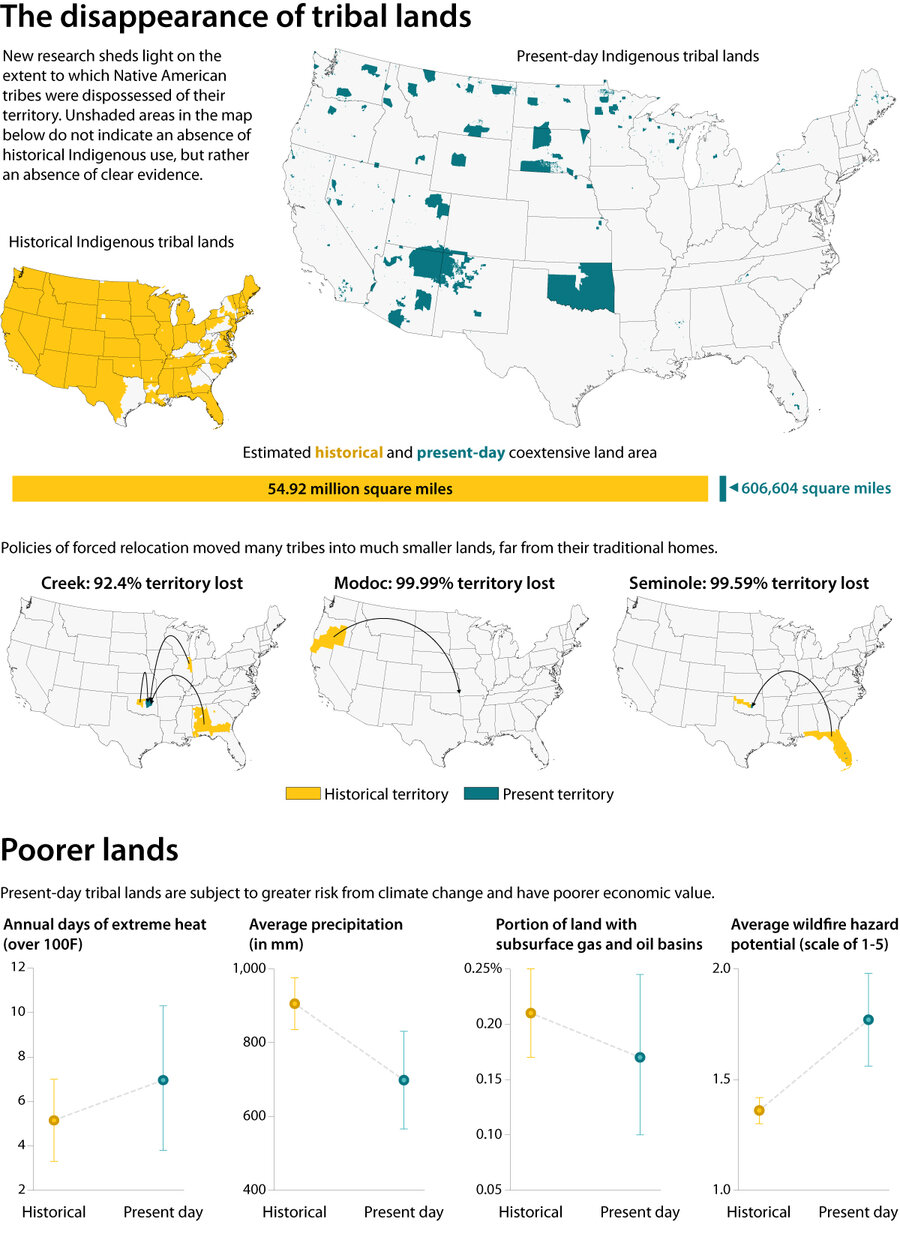Beyond ‘Trail of Tears’: Tracing Indigenous land dispossession in US
Loading...
As a number, 98.8% is pretty huge. According to new research, that’s the share of land once inhabited by Indigenous tribes that they no longer possess, in the present-day contiguous United States.
Using tribal, settler, and government records, researchers have for the first time pulled together a broad dataset to trace the patterns of land dispossession that Native Americans experienced since the arrival of European settlers, according to a study published today in the journal Science.
Many Indigenous tribes no longer exist. Those that do possess on average 2.6% as much land as their tribe once did, find Justin Farrell of Yale University and other researchers who did an intensive seven-year study. In addition, Native peoples were forcibly moved an average of 150 miles away from their original territories, divesting them of land suitable for agriculture in the process.
The findings not only tell the story of people being displaced, but also show how today’s tribes live in places that are disproportionately vulnerable to climate change, says Professor Farrell, a sociologist at the Yale School of the Environment.
Scientists say the overall research has relevance for present-day issues like economic development, justice in policymaking, and climate adaptation.
Referring to the latter, Professor Farrell says, “I think the big picture takeaway ... is to not look at this only as a story of past harm done – of unspeakable violence, of genocide, or land theft and displacement – but an ongoing story about climate change and [its current and future] risks.”








